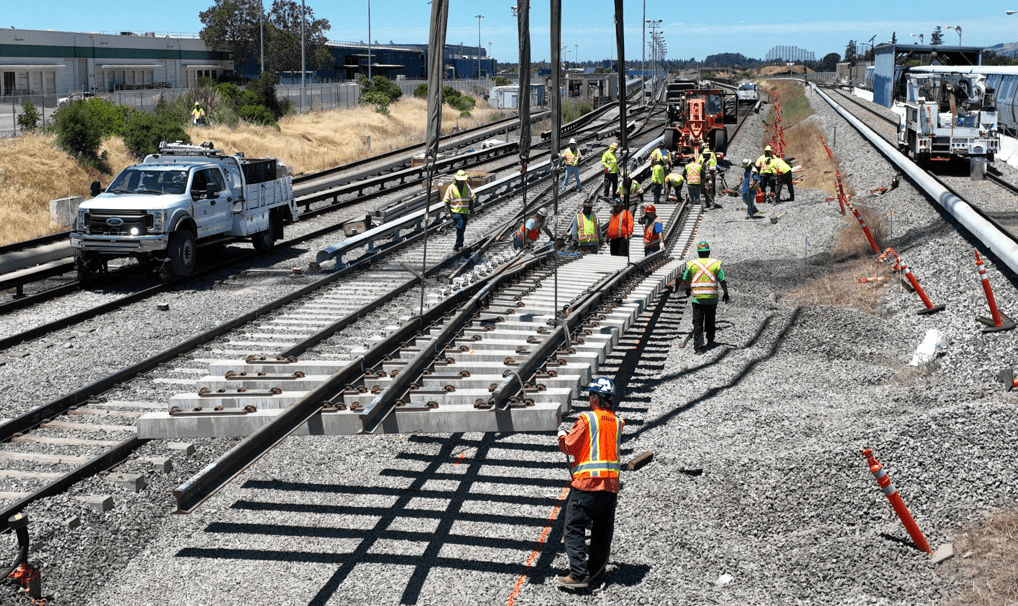The Regional Transportation Funding Select Committee (RTFSC) was set up by the Metropolitan Transportation Commission to decide the details of a key regional measure that would go on the ballot in 2026. Streetsblog readers may recall it was hoped that the authorizing legislation for the measure would pass this year. But resistence from Santa Clara and other counties forced its withdrawal. The Monday before the Labor Day Weekend, the RTFSC met to try and reconcile issues between the counties to get the measure moving forward. Seamless Bay Area's Adina Levin watched the meeting and wrote this update.
The RTFSC was divided between starkly different directions at its most recent meeting last Monday:
- a 9-county option which supports voter desires to improve and coordinate transit - the vision Seamless Bay Area is fighting to realize, supported by Senator Wiener and others;
- a 4-county option that increases taxes but cuts service, supported by Chair Spering and business-friendly groups; and
- a theoretical third, but logistically challenging, option of multiple measures for different agencies and counties.
The Committee continues to have questions on costs, benefits, and revenue sources. Much work remains to be done before the MTC’s deadline for September 23.
Starkly different options, with no consensus
A $1.5 billion, 9-county “option 2” was supported by Senator Wiener, Seamless Bay Area, Urban Habitat and other Voices for Public Transportation coalition members, many transit worker unions, David Canepa from San Mateo County, and Sue Noack from Contra Costa County and many public commenters. This option would maintain service, provide funding for Transformation Action Plan coordination and other improvements to make transit fast, frequent and convenient, plus provide funding for county priorities that can include transit or anything in PlanBayArea. This option would deliver on clear voter desires to improve transit, and would support the region’s climate and housing goals.
A $540 million, 4-county “option 1” was supported by Chair Spering, Jim Wunderman of the Bay Area Council, and the Alliance for Jobs representing construction companies and construction workers. This option is nominally intended to address a fiscal cliff, and to advance transit transformation, but may in fact do the opposite. Muni head Jeff Tumlin said in public comment that this option would result in service cuts for 100,000 riders in San Francisco. The proposal also provides less funding than needed to maintain BART and AC Transit service without cuts. In effect, Option 1 means increased taxes and service cuts.
The $540 million, 4-county option was criticized by several committee members for stepping back support for public transportation, when funding will be needed on an ongoing basis, since the travel pattern changes are expected to be long-lasting.
MTC Commissioner Nick Josefowitz representing San Francisco also spoke in favor of a backup option with multiple measures for the different agencies and counties. This would be needed if the region cannot agree on a multi-agency approach. Unfortunately, for San Francisco, this could logically mean simultaneous separate measures for Muni, BART and Caltrain. This would also make it difficult to support transit coordination initiatives that are helping to regrow ridership.
Lingering questions
Several committee members had clarifying questions, including Alicia Jean Baptiste of SPUR, who sent a letter but was not able to attend the meeting. The SPUR letter raises concerns about the underfunding of Muni in Option 1. For Option 2, it seeks clarification about the funding targeted for Transit Transformation, as well as details on the benefit coming to each county, which was an important factor in the debates on SB-1031. It should be possible to present the county benefits more clearly and attractively, since the MTC and agencies have a new draft plan with service and capital investments benefiting all counties.
Committee members were divided on revenue sources. Option 1 was presented with a sales tax. The smaller tax would interfere less with local sales tax measures, but would also not prevent transit service cuts. Members from Voices for Public Transportation expressed concern that a sales tax is regressive. Option 2 was presented with a parcel tax or payroll tax. Bay Area Council noted that they had supported some parcel taxes in the past but did not support a payroll tax.
Select Committee member Ellen Wu of Urban Habitat asked to explore options that could combine multiple funding sources, as was done for Seattle’s transit funding. This would require separate legislation to change the number of words allowed on a ballot.
Next steps
MTC is still looking for the Select Committee to converge on a direction by September 23, so the next few weeks will be critical to uplift the need for solutions that advance our housing, climate, and economic goals.
However, the timeline is under pressure from national events. At the Select Committee and the previous Friday’s executive committee, multiple representatives spoke about wanting to see polling, which does not make sense until after the November election.
A version of this post also appeared on the Seamless Bay Area site.






